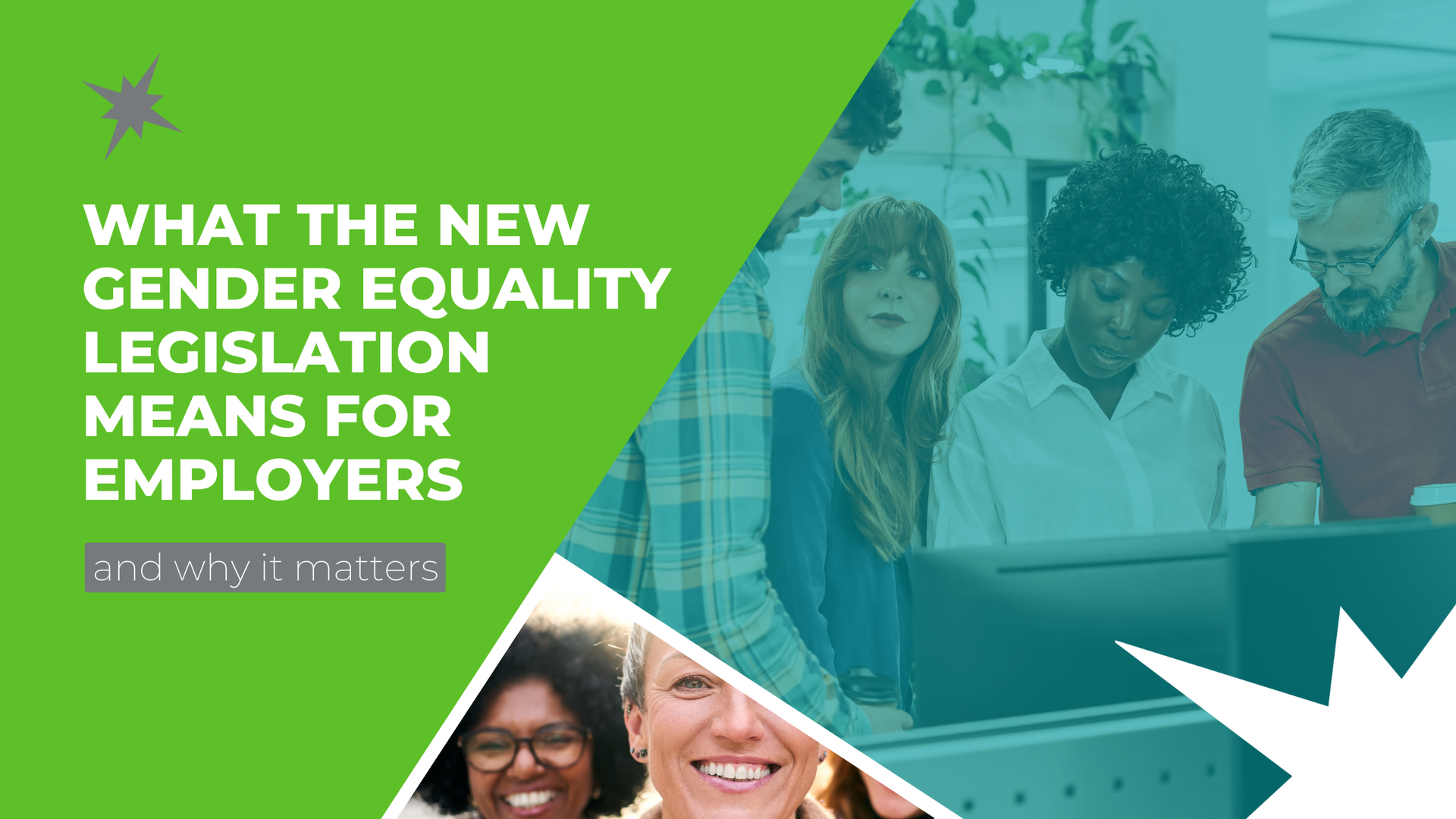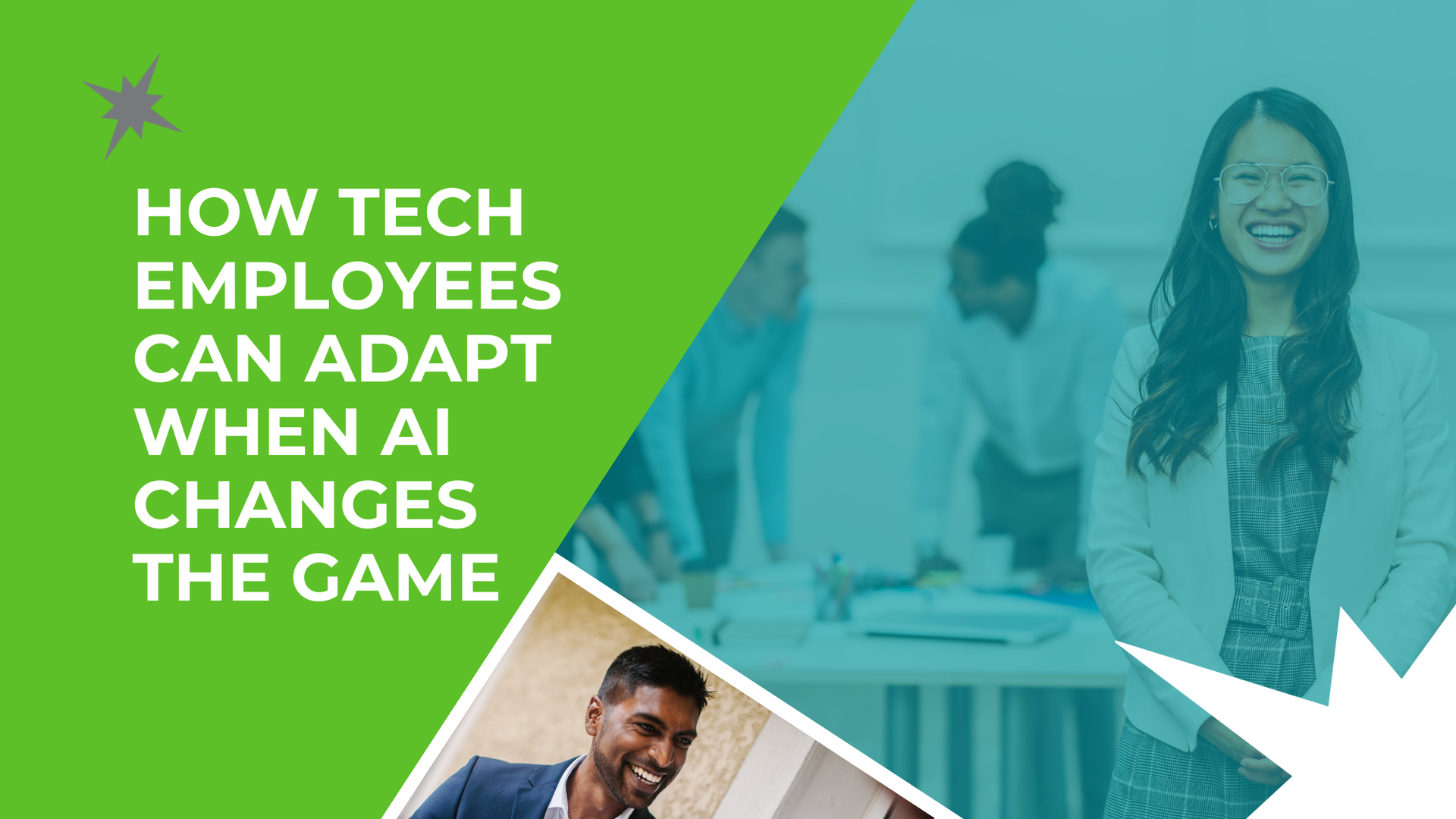News & Insights
Search By Keyword
Filter By Category
Filter By Category
Search By Keyword
Welcome to the Enterprise IT Resources blog!
Explore expert insights on tech recruitment, hiring trends, industry news and job search advice from the team at Enterprise IT Resources.
Recruitment Advice

By Kara Porter
•
September 29, 2025
Contracting was once seen as a stopgap or stepping stone to something else. Now it’s a strategic career choice. Flexible schedules, diverse projects and faster career growth are all part of the package. And companies that understand this shift can harness some of the best skills and minds in the market. Beyond The Payslip Tech professionals today are looking for more than decent remuneration. They want: Work-life integration: hybrid schedules, remote options and control over hours. Variety and learning: exposure to multiple industries, platforms and problem types. Rapid career growth: contracting can accelerate promotions and broaden skillsets faster than traditional roles. In Australia, independent contractors make up a growing slice of the tech workforce. According to the ABS , there are over 1.1 million independent contractors , accounting for roughly 7.5% of all employed Australians. Flexibility is a major draw - over half of casual and contract workers cite flexible hours as their top reason for choosing contracting over permanent roles, highlighting why top tech talent increasingly values autonomy and choice in their work. The Modern Trade-Off Contracting today isn’t about instability but rather choice . Contractors pick projects that challenge them, pay well and align with their lifestyle.

By Kara Porter
•
September 29, 2025
Contracting was once seen as a stopgap or stepping stone to something else. Now it’s a strategic career choice. Flexible schedules, diverse projects and faster career growth are all part of the package. And companies that understand this shift can harness some of the best skills and minds in the market. Beyond The Payslip Tech professionals today are looking for more than decent remuneration. They want: Work-life integration: hybrid schedules, remote options and control over hours. Variety and learning: exposure to multiple industries, platforms and problem types. Rapid career growth: contracting can accelerate promotions and broaden skillsets faster than traditional roles. In Australia, independent contractors make up a growing slice of the tech workforce. According to the ABS , there are over 1.1 million independent contractors , accounting for roughly 7.5% of all employed Australians. Flexibility is a major draw - over half of casual and contract workers cite flexible hours as their top reason for choosing contracting over permanent roles, highlighting why top tech talent increasingly values autonomy and choice in their work. The Modern Trade-Off Contracting today isn’t about instability but rather choice . Contractors pick projects that challenge them, pay well and align with their lifestyle.
Job Search Advice

By Sarah McCandless
•
July 1, 2024
Australia has become a magnet for tech professionals from around the world, including countries like the UK, due to its thriving tech industry, exceptional quality of life, and great career opportunities. Today, we’re unpacking the factors that make Australia an attractive destination for tech talent!

By Sarah McCandless
•
July 1, 2024
Australia has become a magnet for tech professionals from around the world, including countries like the UK, due to its thriving tech industry, exceptional quality of life, and great career opportunities. Today, we’re unpacking the factors that make Australia an attractive destination for tech talent!
News

By Kara Porter
•
March 31, 2025
On March 27, 2025, the Federal Parliament passed new legislation that will reshape how large employers in Australia approach workplace gender equality. Under the reforms, businesses with 500 or more employees will now be required to: Set three gender equality targets, with at least one being numeric; Demonstrate progress toward these targets within three years; Continue reporting annually to the Workplace Gender Equality Agency (WGEA). This is a milestone moment in a play to shift the Australian workplace culture. It reflects a growing push for accountability, transparency and meaningful change in the workplace. So, what does this mean for employers? Targets Must Be Tangible A vague commitment to “improving gender diversity” won’t cut it. Employers will need to back up their intentions with measurable goals - such as increasing women in leadership, closing pay gaps, or improving retention in underrepresented groups. Data-Driven Decisions Will Lead the Way To set realistic, evidence-based targets, companies will need to dive deep into their workforce data. Understanding where the gaps are - whether it’s in hiring, promotion pathways, or pay equity - is step one. Policies, Processes & People It’s also a nudge to reassess internal practices. Are your recruitment and promotion processes inclusive? Are flexible work arrangements available (and used) equitably? Is your leadership team actively invested in supporting diversity outcomes? Accountability Goes Public WGEA will continue to publish pay gap data—and now, target progress too. That means internal efforts will be visible externally, and employers leading the way will build stronger reputations as equitable, forward-thinking workplaces. Why it matters to us at EITR At EITR , we work with businesses undergoing transformation - and the best transformations start from within. Hiring diverse, high-performing teams isn’t just a compliance box to tick—it’s how companies thrive. This legislation reflects a shared responsibility to build workplaces where talent can grow and succeed, regardless of gender. Whether you're a business navigating these new expectations or a candidate seeking an inclusive environment where your career can flourish - we’re here to support you. 🔗 Want to know more about how we help organisations build diverse, future-ready teams? Get in touch with us here .

By Sarah McCandless
•
July 26, 2024
Artificial intelligence is a reality that’s transforming industries and job markets worldwide. In Australia, the latest research from the Tech Council of Australia (TCA) , supported by tech giants like Microsoft , LinkedIn , and Workday , predicts that AI will create 200,000 jobs by 2030 . This surge in AI employment is expected to significantly boost productivity and inject billions into the Australian economy. The Economic Impact of AI The TCA report forecasts that generative AI alone could contribute $115 billion to the Australian economy, with around 70% of this stemming from productivity gains. As AI technologies continue to permeate various sectors, the demand for skilled workers in this space will naturally increase. However, to meet the ambitious target of 200,000 AI jobs by 2030 , the workforce will need to expand by a staggering 500% over the next seven years. Bridging the Skills Gap The rapid growth of AI job opportunities presents both an exciting and challenging landscape. One significant challenge is ensuring that the workforce possesses the necessary skills. The TCA report emphasises the need for major reforms in education and training to bridge this skills gap. Building knowledge and experience in AI should be a fundamental part of professional development, encompassing both on-the-job training and formal learning opportunities. The Role of Retraining and Upskilling To achieve the goal of a robust AI workforce, Australia must expand and diversify retraining pathways. This means creating more opportunities for mid-career retraining and upskilling in AI. As many as 84% of knowledge workers in Australia are already using AI in their work, reporting significant time savings. This indicates a positive trend towards AI adoption, but also highlights the need for continuous learning and development in this rapidly evolving field. The growth of AI jobs won't be confined to the tech sector alone. According to Damian Kassabgi , CEO of TCA, AI’s influence will spread across various fields, including human resources, sales, and governance. This broader application of AI technology necessitates a diverse range of skills to develop, maintain, and scale AI systems effectively. Therefore, it's crucial to prepare for this shift by fostering a multidisciplinary approach to AI education and training. The Need for Comprehensive AI Strategies To fully harness the potential of AI, Australia needs a comprehensive AI investment and capability plan. This plan should outline clear paths for regulation, governance, digital infrastructure, and research commercialisation. Paul Leahy from Workday underscores the importance of preparing the workforce for the widespread adoption of AI and ensuring that pipelines of AI-ready workers are in place to meet the growing demand. The Future of AI in the Workplace AI-powered tools are already helping Australians save time and focus on more critical, creative tasks. As Sarah Carney from Microsoft ANZ points out, “Australians are already using AI-powered tools to help with tasks and are reporting that it saves them time and allows them to focus on more important work and be more creative." The prediction of 200,000 new AI jobs by 2030 marks a transformative period for Australia's workforce and economy. By investing in education, diversifying training pathways, and implementing a robust AI strategy, Australia can position itself at the forefront of the AI revolution. Embracing this change will not only enhance productivity but also open up exciting new career opportunities for Australians across various sectors. Now is the time to act and prepare for an AI-driven future that holds immense potential for growth and innovation.

By Kara Porter
•
March 31, 2025
On March 27, 2025, the Federal Parliament passed new legislation that will reshape how large employers in Australia approach workplace gender equality. Under the reforms, businesses with 500 or more employees will now be required to: Set three gender equality targets, with at least one being numeric; Demonstrate progress toward these targets within three years; Continue reporting annually to the Workplace Gender Equality Agency (WGEA). This is a milestone moment in a play to shift the Australian workplace culture. It reflects a growing push for accountability, transparency and meaningful change in the workplace. So, what does this mean for employers? Targets Must Be Tangible A vague commitment to “improving gender diversity” won’t cut it. Employers will need to back up their intentions with measurable goals - such as increasing women in leadership, closing pay gaps, or improving retention in underrepresented groups. Data-Driven Decisions Will Lead the Way To set realistic, evidence-based targets, companies will need to dive deep into their workforce data. Understanding where the gaps are - whether it’s in hiring, promotion pathways, or pay equity - is step one. Policies, Processes & People It’s also a nudge to reassess internal practices. Are your recruitment and promotion processes inclusive? Are flexible work arrangements available (and used) equitably? Is your leadership team actively invested in supporting diversity outcomes? Accountability Goes Public WGEA will continue to publish pay gap data—and now, target progress too. That means internal efforts will be visible externally, and employers leading the way will build stronger reputations as equitable, forward-thinking workplaces. Why it matters to us at EITR At EITR , we work with businesses undergoing transformation - and the best transformations start from within. Hiring diverse, high-performing teams isn’t just a compliance box to tick—it’s how companies thrive. This legislation reflects a shared responsibility to build workplaces where talent can grow and succeed, regardless of gender. Whether you're a business navigating these new expectations or a candidate seeking an inclusive environment where your career can flourish - we’re here to support you. 🔗 Want to know more about how we help organisations build diverse, future-ready teams? Get in touch with us here .

By Sarah McCandless
•
July 26, 2024
Artificial intelligence is a reality that’s transforming industries and job markets worldwide. In Australia, the latest research from the Tech Council of Australia (TCA) , supported by tech giants like Microsoft , LinkedIn , and Workday , predicts that AI will create 200,000 jobs by 2030 . This surge in AI employment is expected to significantly boost productivity and inject billions into the Australian economy. The Economic Impact of AI The TCA report forecasts that generative AI alone could contribute $115 billion to the Australian economy, with around 70% of this stemming from productivity gains. As AI technologies continue to permeate various sectors, the demand for skilled workers in this space will naturally increase. However, to meet the ambitious target of 200,000 AI jobs by 2030 , the workforce will need to expand by a staggering 500% over the next seven years. Bridging the Skills Gap The rapid growth of AI job opportunities presents both an exciting and challenging landscape. One significant challenge is ensuring that the workforce possesses the necessary skills. The TCA report emphasises the need for major reforms in education and training to bridge this skills gap. Building knowledge and experience in AI should be a fundamental part of professional development, encompassing both on-the-job training and formal learning opportunities. The Role of Retraining and Upskilling To achieve the goal of a robust AI workforce, Australia must expand and diversify retraining pathways. This means creating more opportunities for mid-career retraining and upskilling in AI. As many as 84% of knowledge workers in Australia are already using AI in their work, reporting significant time savings. This indicates a positive trend towards AI adoption, but also highlights the need for continuous learning and development in this rapidly evolving field. The growth of AI jobs won't be confined to the tech sector alone. According to Damian Kassabgi , CEO of TCA, AI’s influence will spread across various fields, including human resources, sales, and governance. This broader application of AI technology necessitates a diverse range of skills to develop, maintain, and scale AI systems effectively. Therefore, it's crucial to prepare for this shift by fostering a multidisciplinary approach to AI education and training. The Need for Comprehensive AI Strategies To fully harness the potential of AI, Australia needs a comprehensive AI investment and capability plan. This plan should outline clear paths for regulation, governance, digital infrastructure, and research commercialisation. Paul Leahy from Workday underscores the importance of preparing the workforce for the widespread adoption of AI and ensuring that pipelines of AI-ready workers are in place to meet the growing demand. The Future of AI in the Workplace AI-powered tools are already helping Australians save time and focus on more critical, creative tasks. As Sarah Carney from Microsoft ANZ points out, “Australians are already using AI-powered tools to help with tasks and are reporting that it saves them time and allows them to focus on more important work and be more creative." The prediction of 200,000 new AI jobs by 2030 marks a transformative period for Australia's workforce and economy. By investing in education, diversifying training pathways, and implementing a robust AI strategy, Australia can position itself at the forefront of the AI revolution. Embracing this change will not only enhance productivity but also open up exciting new career opportunities for Australians across various sectors. Now is the time to act and prepare for an AI-driven future that holds immense potential for growth and innovation.




